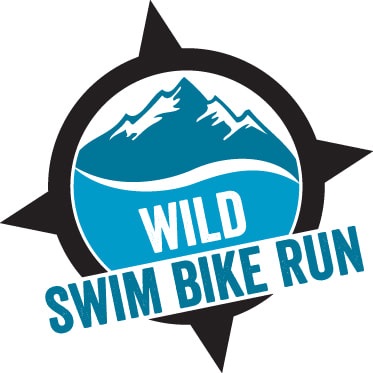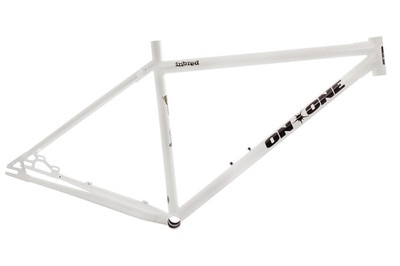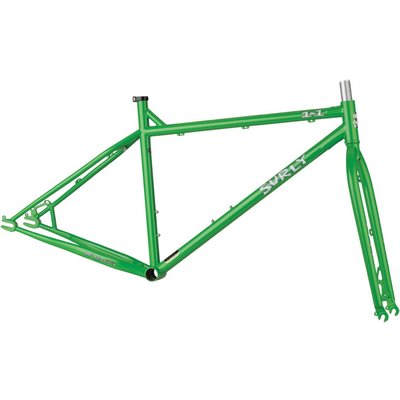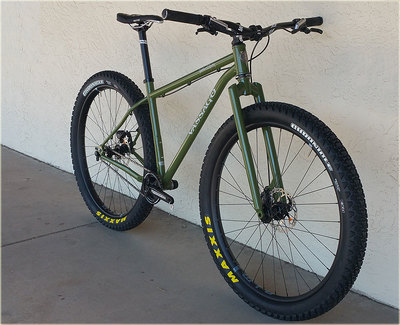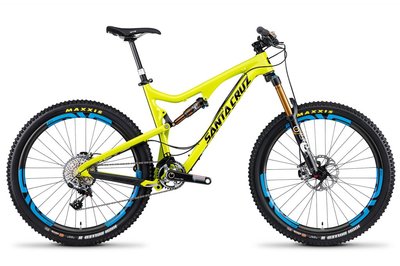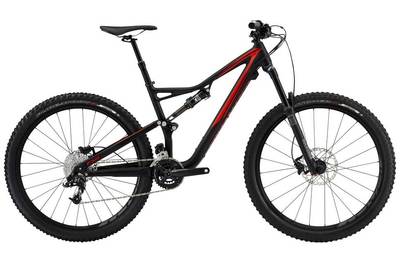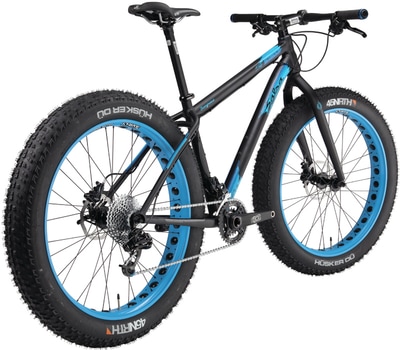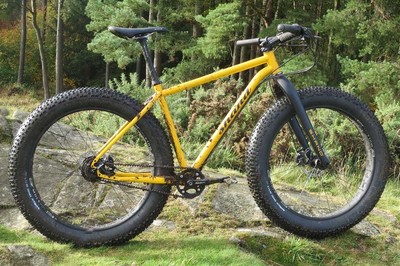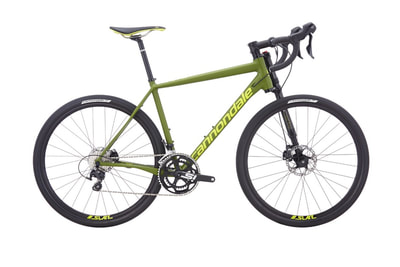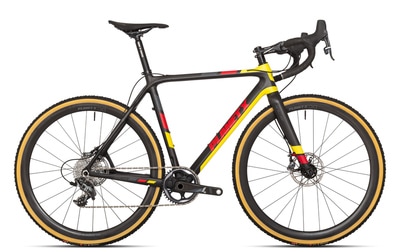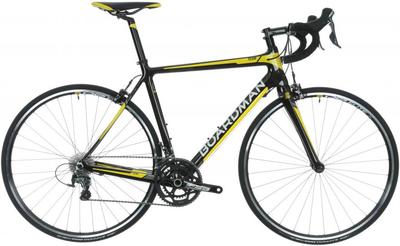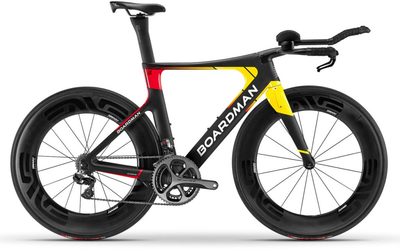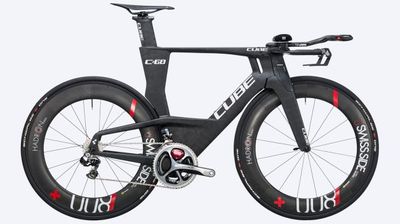What type of bike and why?
One thing worth mentioning before you start looking at different bicycles is that you can never have enough bikes!!!!
There are so many different types of bicycle on the market that its sometimes difficult to know where to start. Identifying the type of cycling and what terrain you will enjoy cycling on is an essential part of buying the right bike for you. So many people have rushed this process and been seduced into buying completely inappropriate bicycles which end up collecting dust in the garage or sold at half the price they were bought for. Try to borrow a bike or rent a bike, take it out on a few rides to see if it works for you. You might start thinking a downhill mountain bike is for you and realise that you actually prefer road cycling, two very different types of bike that won't work when swapped over! Often you will find local bike shops running demo days where you can ride a variety of bikes for free or for a small fee, you will also be able to chat with their staff who will help push you in the right direction for you. Prior to looking at the bike its worth understanding some of the other elements affecting price, handling and weight.
Frame Material
Wheels
Components
The rule of thumb in cycling is the lighter something is the more expensive it is! Very true in the case of components. Most manufacturers will have component ranges at different price points. Normally the top end (Shimano XTR and Dura Ace for example) are eye wateringly expensive. As you would expect they will be light and precision engineered but they will also be less durable with wear and tear leading to expensive replacement parts. We prefer to shop around for bargains in the mid to higher end of the range (Shimano XT and Ultegra) where you get the benefits of weight, durability and a bit of shinyness as well! Another consideration for components being that if you guy high end 'niche' it can be painful getting spares, if you go with big manufacturers (such as Shimano or SRAM depending on which country you live in) life can be much easier and cheaper.
When to buy
If this years colours aren't a priority then look at sale kit from previous seasons. Often there is very little difference in capability unless there has been a major design revamp of a range. None of these components or bikes have a shelf life and will not become obsolete for years to come. This approach can save up to 60% and as a minimum lead to a 20% saving so shop around and get more for less!
There are so many different types of bicycle on the market that its sometimes difficult to know where to start. Identifying the type of cycling and what terrain you will enjoy cycling on is an essential part of buying the right bike for you. So many people have rushed this process and been seduced into buying completely inappropriate bicycles which end up collecting dust in the garage or sold at half the price they were bought for. Try to borrow a bike or rent a bike, take it out on a few rides to see if it works for you. You might start thinking a downhill mountain bike is for you and realise that you actually prefer road cycling, two very different types of bike that won't work when swapped over! Often you will find local bike shops running demo days where you can ride a variety of bikes for free or for a small fee, you will also be able to chat with their staff who will help push you in the right direction for you. Prior to looking at the bike its worth understanding some of the other elements affecting price, handling and weight.
Frame Material
- Titanium - Expensive, light, stiff, strong, doesn't corrode and best left unpainted due to its nice shiny finish. Besides you want people to know you are riding Ti!
- Carbon - Getting cheaper (kind of!) but still more expensive than steel and alloy, light, stiff but flex can be designed into frames,
- Steel - Good steel tubing isn't as heavy as you might think. It has a bit of flex in the frame and does dampen some of the vibration you feel on an Alloy frame. They will rust but this can be remedied with rust treatments. One of the best things about a steel frame is that they can be repaired anywhere you can find a welder.
- Aluminium Alloy - The cheapest of the frame materials. Its light but good steel frames can compete. The ride can be harsh (doesn't dampen vibration as well as steel) but the frame will be stiff. They are prone to metal fatigue with most frames given a 5 year guarantee.
Wheels
- Carbon - Expensive, stiff, light and fast. You will really notice how stiff they are when you sprint or climb with the bike. They are normally more aerodynamic
- Aluminium - Cheaper with a bit more flex. There are plenty of amazing aluminium rims out there and prior to the advent of carbon fibre rims you would have rode happily to the grave on them.
Components
The rule of thumb in cycling is the lighter something is the more expensive it is! Very true in the case of components. Most manufacturers will have component ranges at different price points. Normally the top end (Shimano XTR and Dura Ace for example) are eye wateringly expensive. As you would expect they will be light and precision engineered but they will also be less durable with wear and tear leading to expensive replacement parts. We prefer to shop around for bargains in the mid to higher end of the range (Shimano XT and Ultegra) where you get the benefits of weight, durability and a bit of shinyness as well! Another consideration for components being that if you guy high end 'niche' it can be painful getting spares, if you go with big manufacturers (such as Shimano or SRAM depending on which country you live in) life can be much easier and cheaper.
When to buy
If this years colours aren't a priority then look at sale kit from previous seasons. Often there is very little difference in capability unless there has been a major design revamp of a range. None of these components or bikes have a shelf life and will not become obsolete for years to come. This approach can save up to 60% and as a minimum lead to a 20% saving so shop around and get more for less!
Single Speed Hardtail
We love the simplicity of the single speed (SS) bike, a clean handlebar, a quiet chain on a muddy ride, no loss of grunt through a geared drivetrain, even a steel frame feels light through weight saved on gears and suspension, loads of fun and a great workout. Main requirements for a single speed frame are strong legs, being slightly different, an eccentric bottom bracket (EBB) or horizontal drop outs to allow for chain tensioning.
Pros:
Pros:
- Cost - You can convert an old bike or buy a new one. You can normally pick up a bargain as not everybody likes the idea of a single gear!
- Get fit quick - Forget all this 'High Intensity Workout' nonsense or 'Crossfit', get yourself on a SS and smash some hills for an hour. You'll become a biking beast capable of terrify your riding buddies in no time.
- Maintenance - Not only are they cheap to maintain but also require a great deal less maintenance and repair. An excellent winter bike if you live in the UK.
- Simplicity - If you go full SS purist with a fully rigid frame (i.e rigid metal or carbon fork) you get a hugely different riding experience. Well worth putting the fattest tyre the fork will take and playing with the pressure until it works for you. Great fun and will help sharpen up your handling skills.
- They don't mix well with geared bikes on group rides with fit riders.... unless of course you are already an SS beast!
- We can't think of any other cons, we have been given some points by friends who ride geared bikes but chosen to ignore them :)
Hardtail
Again a simpler bike with less to go wrong than a full suspension bike. Lots of different styles of hardtail out there with geometry designed for tearing down early descents or mile crunchers.
Pros:
Cost - They tend to be cheaper than full suspension bikes depending on the frame material.
Maintenance - They are cheaper to maintain than a full suspension bike with less to go wrong.
Flexibility - You can adapt a hardtail in ways you can't with a full suspension bike. In most cases you can swap in out a single speed set up, different forks, wider tyres, fit larger frame and seat bags. That is not to say that you can't achieve some of this with a full susser its just your options can be more more limited.
Bike Handling Skills - You learn how to handle a bike with a hardtail in a way you miss with a full susser as you are more in contact with the ground, dare we say the ride is a bit more honest? A full susser will be more forgiving when you are blasting a trail...
Cons:
Ride - If you want a smoother ride when smashing down ferocious descents you might find a full susser is for you!
Pros:
Cost - They tend to be cheaper than full suspension bikes depending on the frame material.
Maintenance - They are cheaper to maintain than a full suspension bike with less to go wrong.
Flexibility - You can adapt a hardtail in ways you can't with a full suspension bike. In most cases you can swap in out a single speed set up, different forks, wider tyres, fit larger frame and seat bags. That is not to say that you can't achieve some of this with a full susser its just your options can be more more limited.
Bike Handling Skills - You learn how to handle a bike with a hardtail in a way you miss with a full susser as you are more in contact with the ground, dare we say the ride is a bit more honest? A full susser will be more forgiving when you are blasting a trail...
Cons:
Ride - If you want a smoother ride when smashing down ferocious descents you might find a full susser is for you!
Full Suspension
A full susser is great fun, We are probably biased towards hardtails as they are a simpler bike with less fettling and maintenance required. However, every time we jump on a full susser and go for a spin we are reminded why people love riding them. When you unlock the suspension front and rear and let it rip downhill they are great fun. Full suspension bikes range in weight and vertical capability from lightweight cross country bikes to big downhill rigs which aren't dissimilar to a motor bike trials bike without the engine!
Pros:
Ride - Its a much smoother ride and much more forgiving. You can attack a descent in a way that would shake you to pieces on a hardtail. The more suspension you have the more the bike can take unless you are Danny Macaskill!
Range - Technological advances and development has lead to some amazing weight saving gains on frames and components. Getting 'more' suspension used to mean you would be hauling a heavy bike up hill sweating for that downhill payoff, big suspension frames can now be surprisingly light! This has allowed for a wide variety of full sussers from cross country whippets to all mountain trail bikes to insane downhill rigs. As with anything in the industry 'light' means 'expensive'.
Cons:
Cost - Good bikes aren't cheap and the really nice bikes are eye wateringly expensive. With all this tech comes; forks, shocks, bushings, bearings that all need servicing... often this doesn't come cheap.
Maintenance - If you are riding in wet UK conditions you will need to keep on top of this if you want to keep the bike riding niggle free and avoid unnecessary component wear. Suspension bikes can develop some creaks and clicking noises that will drive you nuts if you don't keep the grime out of moving parts. Well worth getting to know your bike to avoid this problem.
Weight - Cheaper models will incur a weight penalty, you will find climbing harder.... however, its all good training for when you get a more expensive feather light bike and get to destroy your mates on the hills!
Bike Packing Issues - The frame is normally choked up with suspension components losing space for larger frame bags. You can fit frame bags on the full sussers, its just a bit of a mission compared to a hardtail.
Pros:
Ride - Its a much smoother ride and much more forgiving. You can attack a descent in a way that would shake you to pieces on a hardtail. The more suspension you have the more the bike can take unless you are Danny Macaskill!
Range - Technological advances and development has lead to some amazing weight saving gains on frames and components. Getting 'more' suspension used to mean you would be hauling a heavy bike up hill sweating for that downhill payoff, big suspension frames can now be surprisingly light! This has allowed for a wide variety of full sussers from cross country whippets to all mountain trail bikes to insane downhill rigs. As with anything in the industry 'light' means 'expensive'.
Cons:
Cost - Good bikes aren't cheap and the really nice bikes are eye wateringly expensive. With all this tech comes; forks, shocks, bushings, bearings that all need servicing... often this doesn't come cheap.
Maintenance - If you are riding in wet UK conditions you will need to keep on top of this if you want to keep the bike riding niggle free and avoid unnecessary component wear. Suspension bikes can develop some creaks and clicking noises that will drive you nuts if you don't keep the grime out of moving parts. Well worth getting to know your bike to avoid this problem.
Weight - Cheaper models will incur a weight penalty, you will find climbing harder.... however, its all good training for when you get a more expensive feather light bike and get to destroy your mates on the hills!
Bike Packing Issues - The frame is normally choked up with suspension components losing space for larger frame bags. You can fit frame bags on the full sussers, its just a bit of a mission compared to a hardtail.
Fat Bikes
They are amazing adventure bikes, brilliant fun to ride, go anywhere and we love 'em. Simple and robust bikes capable of dealing with the wet and boggy conditions you find under wheel in many of our more mountainous national parks. The wider nature of the bike frame allows for more packing options for your kit.
Pros:
Cost - Because they are a niche market you can pick up a real bargain. 'Charlie the Bike Monger' often has an ex-demo or past season bargains to be had, so look around!
Simplicity - When I say simplicity I am referring to the fully rigid varietal! If you fit a Rohloff or an Alfine internal geared hub (IGH) then these bikes can be a very simple beast to maintain and look after. Like any other bike if you started adding suspension and expensive lightweight components that changes. Remember this is an adventure bike not a cross country race whippet!
Cool - We think they are awesome and look perfect for the kind of riding we really, really get a kick out of. Getting well and truly off the beat and path into some isolated country with challenging riding surfaces.
Range - There is a huge range of frame types and wheel sizes out there. We think if you are going to go fat... go full fat with a 4.8" tyre. However, horses for courses with many of the 29+ and 27.5+ providing many of the fat benefits whilst maintaining the ability to burn the trails up.
Cons:
Usage - Unless you live on the edge of a national park or some wild country you probably aren't going to ride the bike on a regular basis. This is definitely an 'away fixture' bike unless you are lucky to live on the edge of adventurous riding fit for a fatty.
Weight - Unless you spend a ton of cash this is going to be heavier than other bikes. However, with this should come a reliability benefit as they are built for pushing the boundaries.
Tyres and Tubes - You can ride tubeless and tubes. We have stayed away from tubeless tyres as we can't be bothered with hassle of setting them up and dealing with worst case scenarios often resulting in a gooey mess. Carrying spare tubes for these is like somebody popping rocks into your daysack but additional weight is extra training. IMPORTANT NOTE - You need to get the correct tyre for the terrain you ride on... and fat bike tyres aren't cheap so well worth checking out what the forums are saying.
Pros:
Cost - Because they are a niche market you can pick up a real bargain. 'Charlie the Bike Monger' often has an ex-demo or past season bargains to be had, so look around!
Simplicity - When I say simplicity I am referring to the fully rigid varietal! If you fit a Rohloff or an Alfine internal geared hub (IGH) then these bikes can be a very simple beast to maintain and look after. Like any other bike if you started adding suspension and expensive lightweight components that changes. Remember this is an adventure bike not a cross country race whippet!
Cool - We think they are awesome and look perfect for the kind of riding we really, really get a kick out of. Getting well and truly off the beat and path into some isolated country with challenging riding surfaces.
Range - There is a huge range of frame types and wheel sizes out there. We think if you are going to go fat... go full fat with a 4.8" tyre. However, horses for courses with many of the 29+ and 27.5+ providing many of the fat benefits whilst maintaining the ability to burn the trails up.
Cons:
Usage - Unless you live on the edge of a national park or some wild country you probably aren't going to ride the bike on a regular basis. This is definitely an 'away fixture' bike unless you are lucky to live on the edge of adventurous riding fit for a fatty.
Weight - Unless you spend a ton of cash this is going to be heavier than other bikes. However, with this should come a reliability benefit as they are built for pushing the boundaries.
Tyres and Tubes - You can ride tubeless and tubes. We have stayed away from tubeless tyres as we can't be bothered with hassle of setting them up and dealing with worst case scenarios often resulting in a gooey mess. Carrying spare tubes for these is like somebody popping rocks into your daysack but additional weight is extra training. IMPORTANT NOTE - You need to get the correct tyre for the terrain you ride on... and fat bike tyres aren't cheap so well worth checking out what the forums are saying.
Gravel Bike
These are the supercars of the adventure cycling world. A more relaxed geometry than the cyclocross bike ensures that whilst you can take on sections of rugged terrain it will seamlessly transition to hours of capable, comfortable off-tarmac mile crunching. Often set up with plenty of rack mounts and plenty of room for framebags makes this a superb road or off road touring machine.
Pros:
Cost - They are still in the niche (ish) market providing the opportunity to negotiate additional discounts during sales and grab an online bargain if you aren't fussy about the manufacturer. A good opportunity to shop for a well reviewed frame and upgrade components as you grind them to dust on your adventures.
Flexibility - These is your opportunity to customise the bike to fit your adventures. You can go crazy with aero bars, disc brakes, IGH hubs, framebags, dynamo hubs amongst a few thoughts. This is a bike that can be a road bike, commuter, weekend warrior or globe trotter.
Cool - They are pretty dam cool... end of chat.
Range - Every manufacturer seems to be getting into them providing plenty of choice. Steel frames, horizontal drop outs with plenty of braze-ons will permit the broadest spectrum of components and luggage carrying options.
Cons:
Usage - Unless you are Martyn Ashton or a glutton for punishment seriously rugged offroad routes will be similar to riding a lump hammer down a cliff. They can be carried over the toughest sections to knit together routes with the odd hike a bike obstacle though... so not really a con.
Pros:
Cost - They are still in the niche (ish) market providing the opportunity to negotiate additional discounts during sales and grab an online bargain if you aren't fussy about the manufacturer. A good opportunity to shop for a well reviewed frame and upgrade components as you grind them to dust on your adventures.
Flexibility - These is your opportunity to customise the bike to fit your adventures. You can go crazy with aero bars, disc brakes, IGH hubs, framebags, dynamo hubs amongst a few thoughts. This is a bike that can be a road bike, commuter, weekend warrior or globe trotter.
Cool - They are pretty dam cool... end of chat.
Range - Every manufacturer seems to be getting into them providing plenty of choice. Steel frames, horizontal drop outs with plenty of braze-ons will permit the broadest spectrum of components and luggage carrying options.
Cons:
Usage - Unless you are Martyn Ashton or a glutton for punishment seriously rugged offroad routes will be similar to riding a lump hammer down a cliff. They can be carried over the toughest sections to knit together routes with the odd hike a bike obstacle though... so not really a con.
Cyclocross Bike
Whilst there is a big cyclocross scene we think that these bikes have been pigeon holed to their detriment! Its an incredibly flexible frame with its more robust design ideal for winter road biking, cycle touring or a commuter bike. Slight tweeks to tyre size and lots of options open up.
Pros:
Cost - You can normally pick up a well specced cyclocross bike at 'value' prices. They are considered a niche discipline so many cyclists or those new to the sport would discount them as an option. This means that come sale time you can normally get them at significantly reduced prices and have greatly leverage to negotiate further reductions.
Flexibility - As we have already mentioned, you can do a lot with these bikes with just a simple tyre swap. If you are looking at one for a cycle touring bike, look for a steel frame with multiple bosses (bolt on points for panniers) and you will have a very capable bike. This is also a great option if you want to protect your expensive carbon fibre road bike from harsh winter conditions.
Cons:
We can't see one.... If you are looking for a cyclocross bike, computer bike, touring bike or winter road bike then this is a great option!
Pros:
Cost - You can normally pick up a well specced cyclocross bike at 'value' prices. They are considered a niche discipline so many cyclists or those new to the sport would discount them as an option. This means that come sale time you can normally get them at significantly reduced prices and have greatly leverage to negotiate further reductions.
Flexibility - As we have already mentioned, you can do a lot with these bikes with just a simple tyre swap. If you are looking at one for a cycle touring bike, look for a steel frame with multiple bosses (bolt on points for panniers) and you will have a very capable bike. This is also a great option if you want to protect your expensive carbon fibre road bike from harsh winter conditions.
Cons:
We can't see one.... If you are looking for a cyclocross bike, computer bike, touring bike or winter road bike then this is a great option!
Road Bike
If you are serious about getting into road racing, triathlon or simply have some quality riding on your doorstep then a road bike is a must. They come in a bewildering selection of brands, materials, components and specialities. The more expensive they get the closer they are to owning an expensive car... namely, servicing and replacement of high end components can be eye wateringly expensive.
Pros:
Cool - They look and feel great when they are on song. When you have a road bike dialled in and you are flying through the countryside at 50kmh it is sensational!
Flexibility - If you want to get into triathlon a road bike is pretty essential part of your training throughout the year and a great back up for an non-operative TT bike. If you are keen to get into half and full ironman clipping on a set of aerobats is an inexpensive alternative to buying a TT bike.
Cons:
Cost - They can get very expensive and if you buy a bike without understanding the components that come with the bike, replacement of components through normal wear can come as a shock. Not all manufacturers produce reliable and fiddle free components, worth asking your LBS before you buy if you want a hassle free set up.
Comfort - If you don't set the bike up correctly or have 'saddle fitness' it can be incredibly uncomfortable and off putting. So get your bike set up correctly, invest in decent cycling shorts and spend time in the saddle to toughen up your rear end! The soft option is to buy a plusher seat... If you are new to the game getting a bike fit from your LBS will make a difference, this can range from a quick set up to a detailed bike fitting which will come with a price tag. In Bath, Bristol and Taunton Bike UK have offered Wild Swim Bike Run a 10% discount on all bike fits at their shops.
Pros:
Cool - They look and feel great when they are on song. When you have a road bike dialled in and you are flying through the countryside at 50kmh it is sensational!
Flexibility - If you want to get into triathlon a road bike is pretty essential part of your training throughout the year and a great back up for an non-operative TT bike. If you are keen to get into half and full ironman clipping on a set of aerobats is an inexpensive alternative to buying a TT bike.
Cons:
Cost - They can get very expensive and if you buy a bike without understanding the components that come with the bike, replacement of components through normal wear can come as a shock. Not all manufacturers produce reliable and fiddle free components, worth asking your LBS before you buy if you want a hassle free set up.
Comfort - If you don't set the bike up correctly or have 'saddle fitness' it can be incredibly uncomfortable and off putting. So get your bike set up correctly, invest in decent cycling shorts and spend time in the saddle to toughen up your rear end! The soft option is to buy a plusher seat... If you are new to the game getting a bike fit from your LBS will make a difference, this can range from a quick set up to a detailed bike fitting which will come with a price tag. In Bath, Bristol and Taunton Bike UK have offered Wild Swim Bike Run a 10% discount on all bike fits at their shops.
Time Trial Bike (TT Bike)
An expensive way of getting faster on the bike course is a TT bike, however, you still need the engine to push it. This is an expensive and specialised piece of equipment which can be as twitchy as a thoroughbred race horse.
Pros:
Speed - These bikes are quick, they can be really quick if you train correctly with them. Gearing is normally bigger than standard road bike gearing i.e climbing hills is harder but top end speed on flat/undulating roads is higher.
Cons:
Cost - The sky is the limit in terms of cost. Components and in particular wheels can cost you as much as a nice road bike.
Usage - Time trials and triathlon are about the limit in terms of usage.
Handling - If your local riding is on rough tarmac, with challenging climbs/descents and exposed windy sections you are in for a tough day at the office. You need to spend time on a TT bike getting confident, comfortable, relaxed and strong to realise their full potential.
Climbing - Gearing and bike geometry are not on your side. Climbing is harder than on a road bike and an area that will require work if you intend to ride hilly courses.
Comfort - We would highly recommend a bike fitting from an LBS that have experience with TT and Triathletes. A poorly fitted TT bike will be uncomfortable, less stable, increase the likelihood of injury, cost speed and energy. Not good so well worth the additional cost unless you are buying it new from an LBS in which case ask for the fitting as a deal sweetener! In Bath, Bristol and Taunton Bike UK have offered Wild Swim Bike Run a 10% discount on all bike fits at their shops.
Pros:
Speed - These bikes are quick, they can be really quick if you train correctly with them. Gearing is normally bigger than standard road bike gearing i.e climbing hills is harder but top end speed on flat/undulating roads is higher.
Cons:
Cost - The sky is the limit in terms of cost. Components and in particular wheels can cost you as much as a nice road bike.
Usage - Time trials and triathlon are about the limit in terms of usage.
Handling - If your local riding is on rough tarmac, with challenging climbs/descents and exposed windy sections you are in for a tough day at the office. You need to spend time on a TT bike getting confident, comfortable, relaxed and strong to realise their full potential.
Climbing - Gearing and bike geometry are not on your side. Climbing is harder than on a road bike and an area that will require work if you intend to ride hilly courses.
Comfort - We would highly recommend a bike fitting from an LBS that have experience with TT and Triathletes. A poorly fitted TT bike will be uncomfortable, less stable, increase the likelihood of injury, cost speed and energy. Not good so well worth the additional cost unless you are buying it new from an LBS in which case ask for the fitting as a deal sweetener! In Bath, Bristol and Taunton Bike UK have offered Wild Swim Bike Run a 10% discount on all bike fits at their shops.
